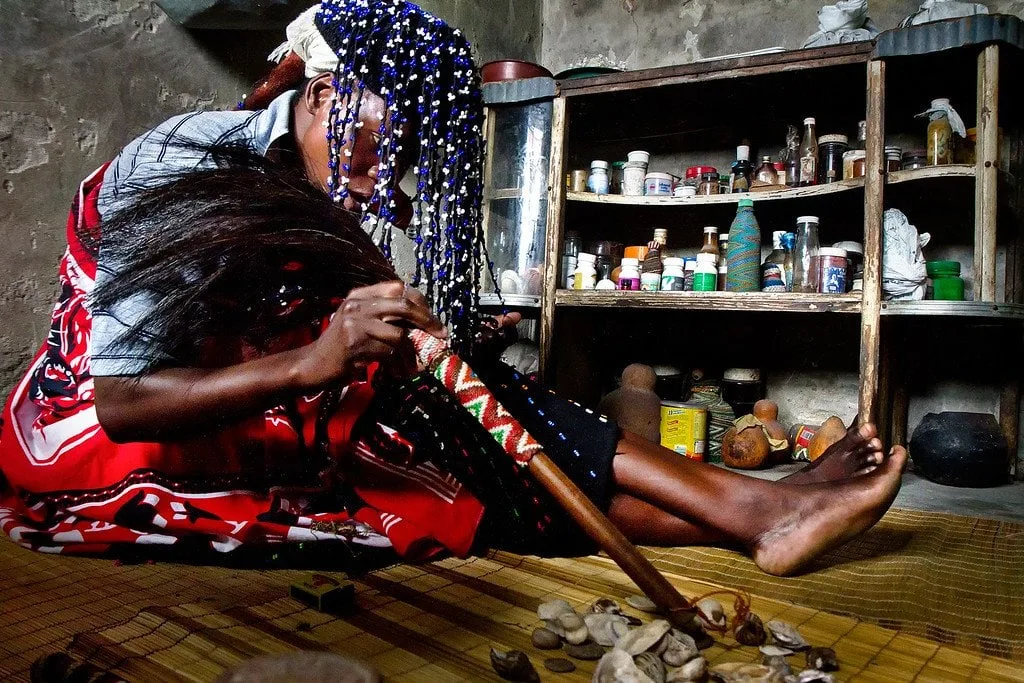
Zulu Medicine Woman
South Africa
Traveling to the rainbow nation really surprised me. South Africa is incredibly diverse. Friendly people and stunning landscapes inspire some powerful photography.
South Africa’s landscapes are as varied as its famous wildlife. Local South Africans are generally friendly and welcoming, while modern cities like Cape Town balance out more rural areas like St. Lucia.
Below you’ll discover my favorite photos after 2 months traveling through different parts of South Africa.
Marvel at exotic wild animals on safari, fly over the coast in a microlight, or learn your fortune from an indigenous medicine woman.
Cook home-made bread over an open fire with new friends, wander through luscious green vineyards, inhale aromatic spices at an Indian market, hunt for shooting stars deep in the bush, and share lunch with locals in a township.
These are just a few experiences you can have in South Africa. Enjoy!
Wildlife In South Africa
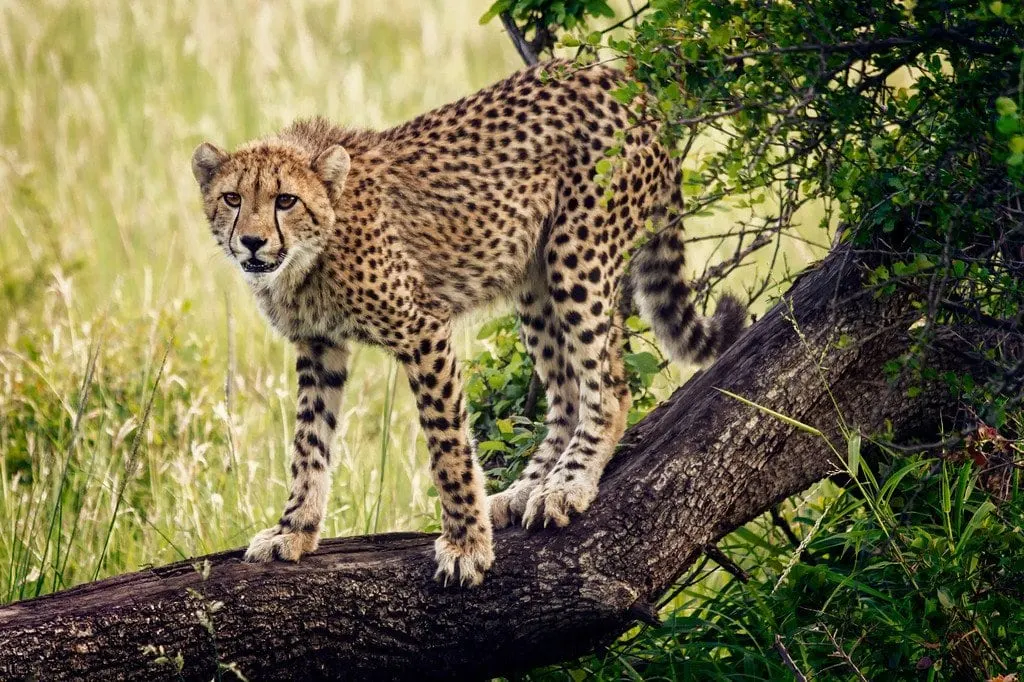
Young Cheetah on the Hunt
With nearly 300 species of mammal and over 800 types of birds, South Africa is blessed with a riot of two-legged and four-legged fauna. The “Big 5” get most of the attention – the elephant, rhino, leopard, lion and buffalo.
But expect to see other beautiful creatures like the cheetah, fastest land animal in the world (those deceptively slender legs can propel it along at speeds above 100km/hr).
Traditional Braai
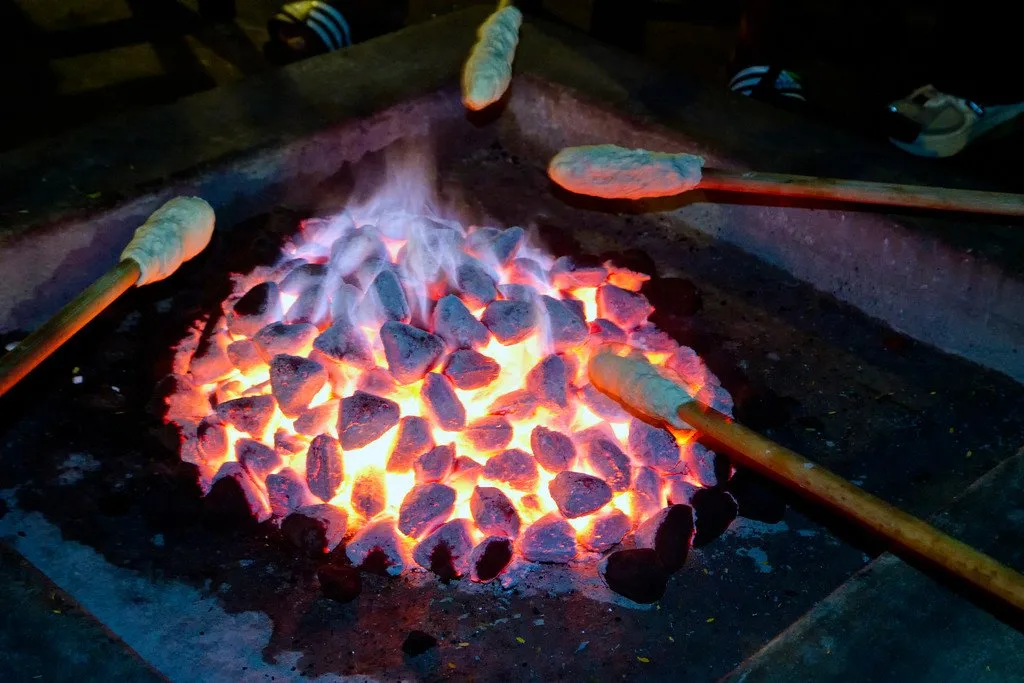
Stick Bread at a Braai
In Afrikaans, it’s a braii (which rhymes with “cry”). You know it as “barbecue” or “meat roast”- but the South African barbie is a lot more than a hastily-arranged burger or two with your mates.
It’s often a major social gathering – one man put in charge of grilling the meat, the other men providing moral support, and everyone else tucking into salad and krummelpap (crumb porridge, traditionally eaten alongside the meat). Practice it for yourself on National Braai Day, on the 24th of September every year.
Warm Weather Penguins

African Penguin at Boulder’s Beach
Not all penguins like it ice-cold. The African Penguin (also called the jackass penguin, for reasons that become obvious when your first hear it) can be found on the shores of South Africa, gorging itself on anchovies and breeding in burrows built into the cliffs.
And if you’re wondering, it stops itself overheating with the help of a unique gland positioned just above the eye. When temperatures rise, its body pumps blood to this gland to dissipate its excess heat into the air, turning it bright pink in the process (see above).
Breathtaking Landscapes
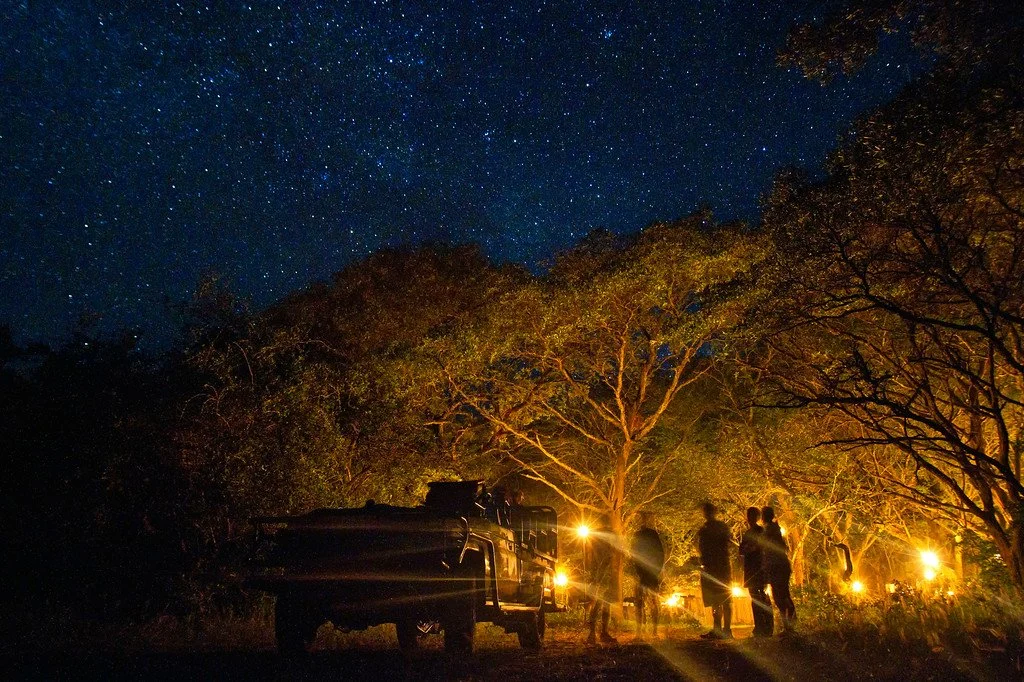
Night Safari Under the Stars
For sheer variety of landscapes, South Africa is stunningly good value. Plains turn to forests, mountains to sand dunes. Come away from the coast and the imposing presence of Table Mountain and the land rises, up an escarpment dominated by the Drakensberg Mountains, and onto the Central Plateau.
Beyond is the huge and remarkably varied biosphere called the Great Karoo, once an Afrikaner stronghold, now a growing safari destination.
Diverse Wildlife
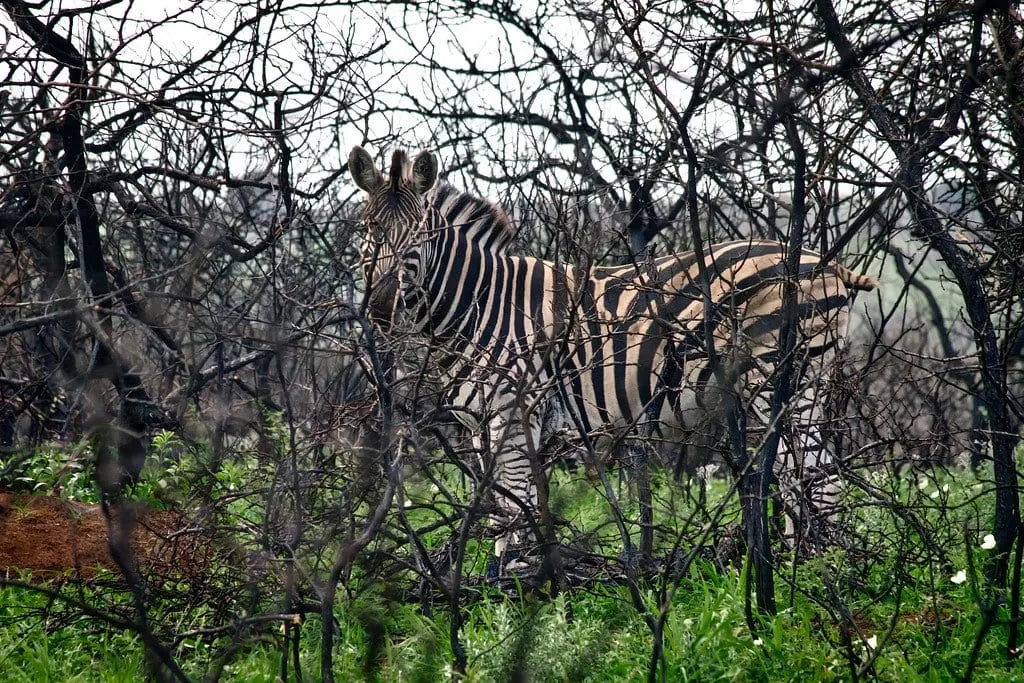
Zebra Trying to Hide
South Africa’s wildlife is so varied, even the zebras come in two distinct flavours. The most common type is the plains or Burchell’s Zebra (pictured), identifiable by its pale grey stripe in between black stripes on its hind quarters.
Far less common – and recently threatened with extinction – is the Cape Mountain Zebra, easy to spot because of a chocolate orange mark on the edge of its muzzle. There are still less than 2,000 of them in the world.
Wine In South Africa
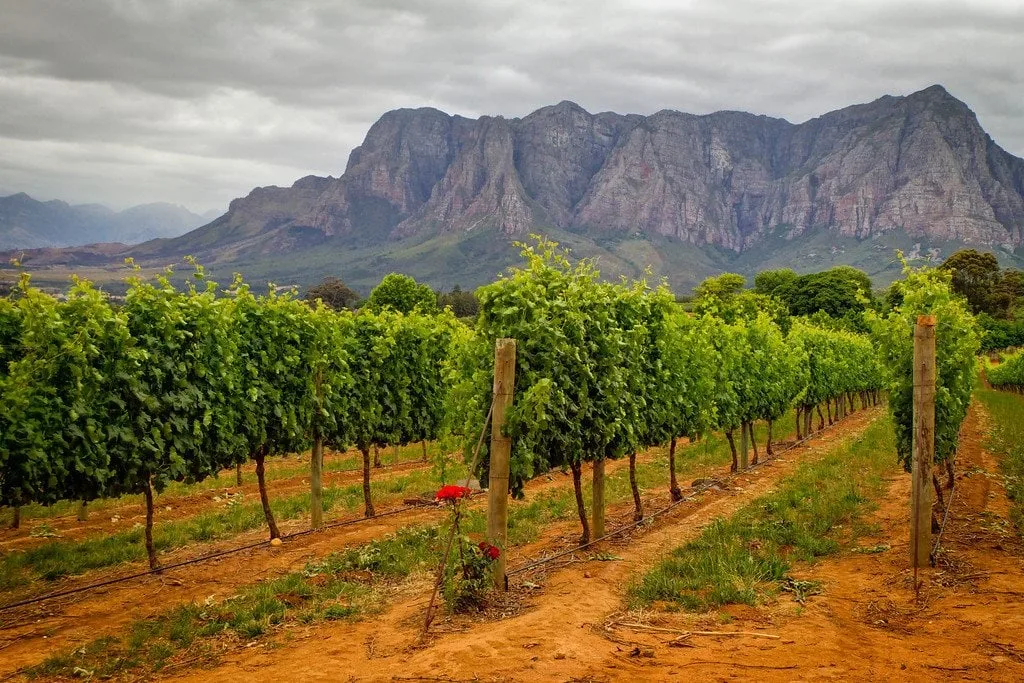
Delaire-Graff Wine Vineyards
It may have a history going back to the 17th Century, but South African winemaking is best-known for exploding onto the world stage in the 1980s, after export markets reopened. These days, vineyards like the ones at Stellenbosch (above) are internationally famous creators of some of the world’s most popular Cabernet Sauvignon, Shiraz, Merlot and Pinotage wines.
This is a good place to pull up a chair at a cafe after a long day of exploring, and order a glass of whatever they recommend.
Indian Community
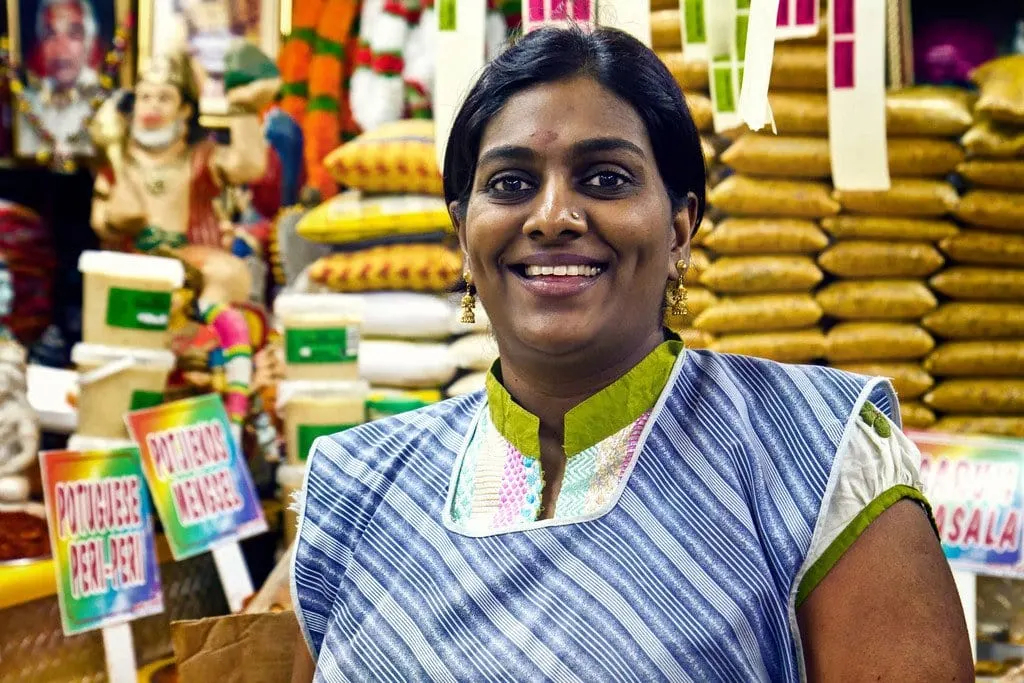
Indian Woman Selling Spices in Durban
2010 marked the 150th anniversary of the arrival of the first immigrant workers from India. Over 150,000 Indians arrived between 1860 and 1910, when the practice of indentured labour was ended – and almost three-quarters of them chose to stay, put down roots and settle in South Africa.
Today the majority live around the city of Durban, and the country as a whole contains over 1 million Africans of Indian descent.
South African Safari
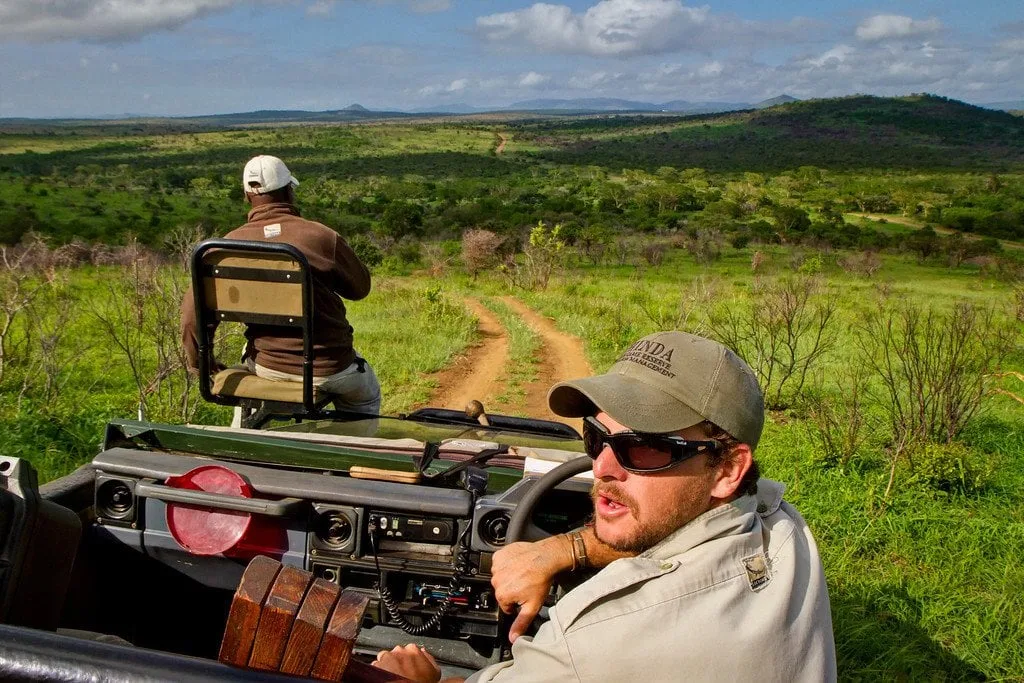
Phinda Safari Game Drive
It’s not South Africa if you don’t go on safari. Nothing beats the thrill of seeing the mightiest of its wildlife up close. It’s a popular activity so you’ll never have problems finding professional tours ready to take you out into the wilds.
But if you’re looking for a “soft” introduction, hire a car and drive to the Kruger National Park for a few days of exploring (don’t expect to see much more than a glimpse of its 2 million hectares) – and stay at a wilderness camp for the night where tents are available for hire.
The Most Dangerous Animal
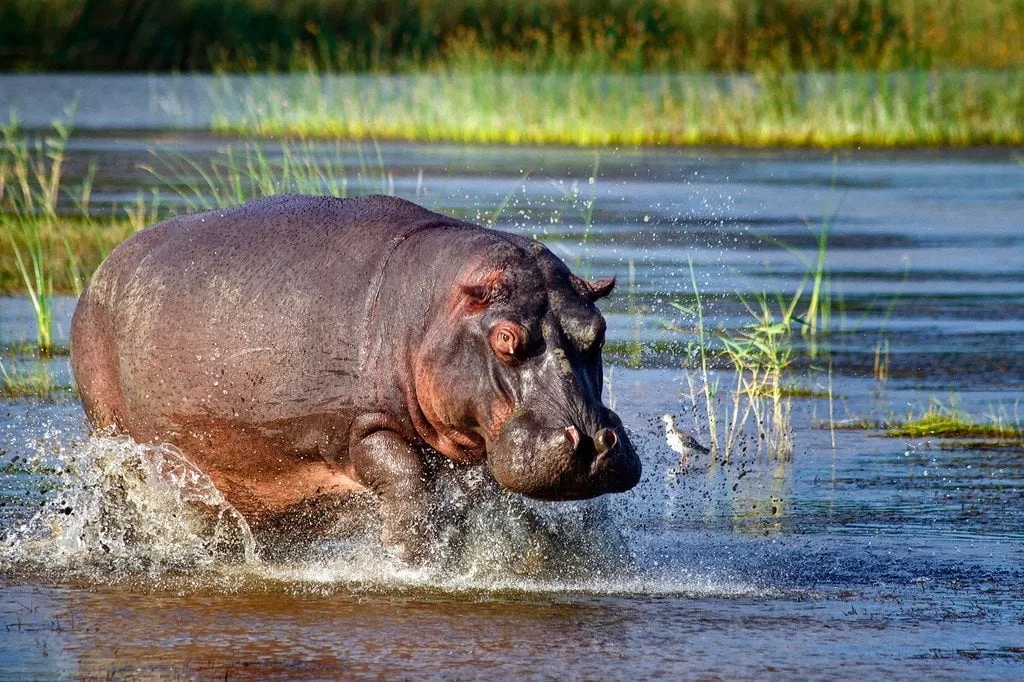
Hippo Charge in St. Lucia
Stumpy, rotund and comical-looking, the hippopotamus looks like the mother of all pigs – and behaves like a T-Rex. It’s Africa’s most dangerous land animal, able to propel its 3,300lb bulk towards you at terrifying speed.
Hippos are fiercely territorial and aggressive, they’re armed with teeth like sharpened spears, and they really don’t like humans going near them. Adjust your behavior accordingly.
South Africa From The Air
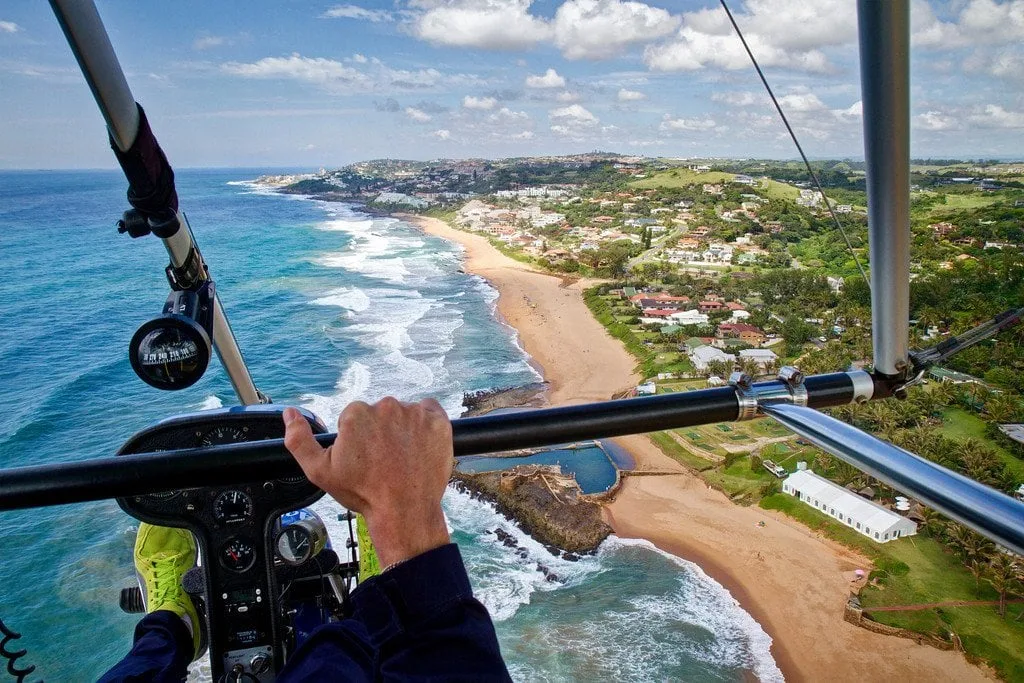
Microlight Flight over the Coastline
If you think South Africa looks stunning from the ground, the view from above will blow your mind. I enjoyed this stunning microlight’s-eye view of the coast on a perfect day, but you’ll find micro-lighting options all over the country, particularly over game reserves.
You can follow the wildlife from a height that doesn’t disturb it. Becoming a trained microlight pilot will take you 25-30 hours of practice lessons and should be done through a professional flight school.
Poverty In South Africa
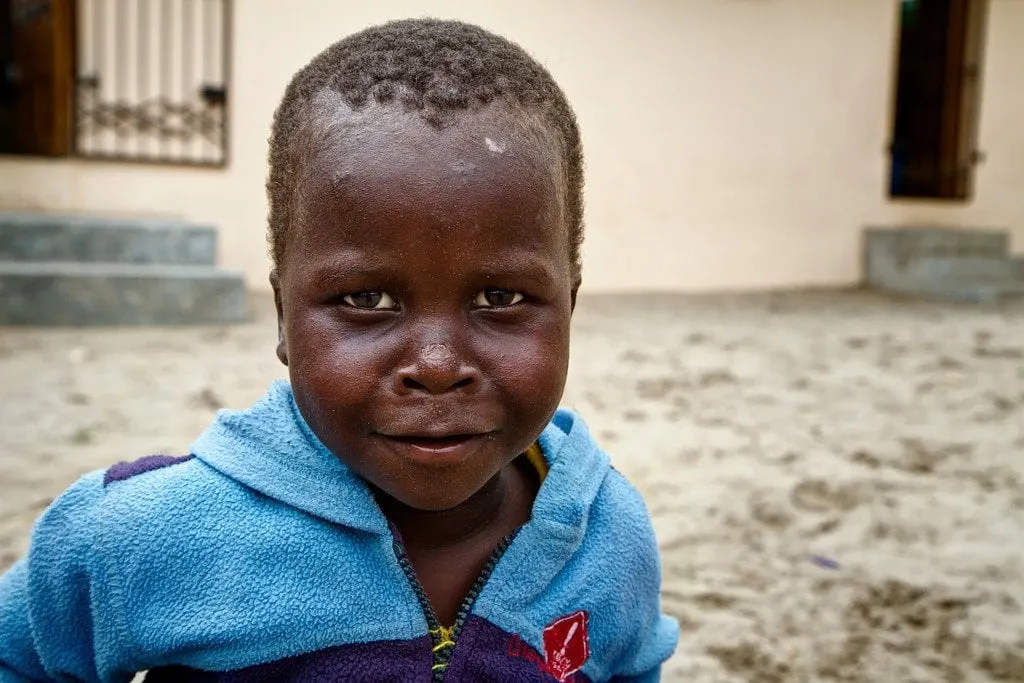
Young Orphan Boy
Happily, South Africa’s previously severe poverty and unemployment levels have decreased since the turn of the century – but it’s still a country with its social and economic challenges.
Two million Africans have climbed out of extreme poverty since 2006, and government initiatives, international programs and tourism continue to do their bit.
National Parks
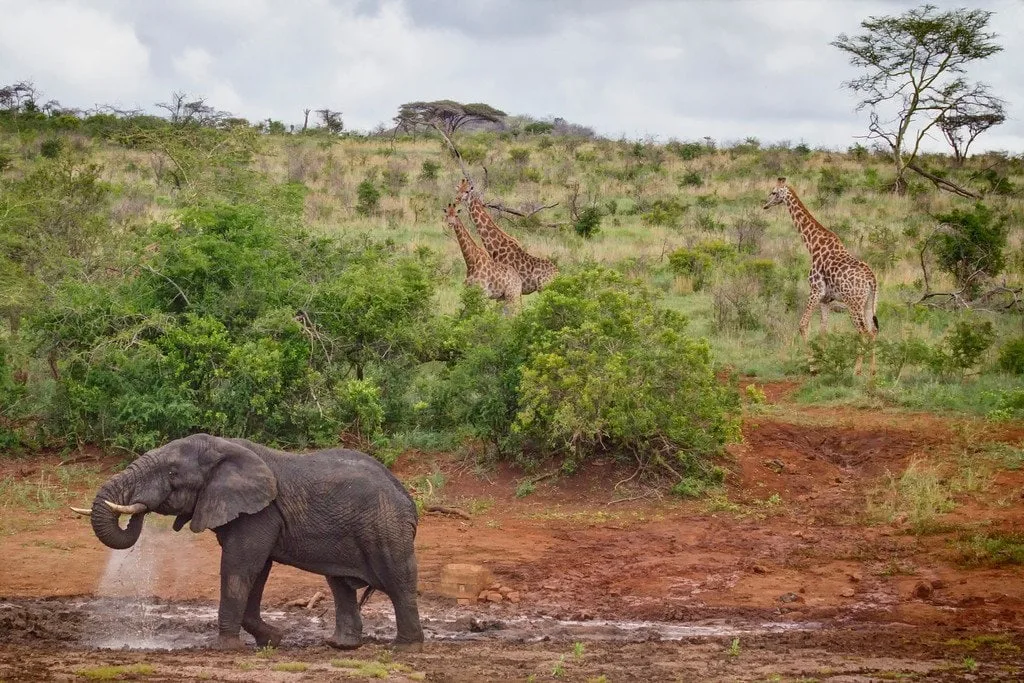
African Elephant & Giraffes
Dominated by the incredible Kruger National Park (nearly 20,000 km2), South Africa’s national parks are spread across every corner of the country, giving you once-in-a-lifetime views of animals in their (protected) habitat.
If you’re sticking to the coast or the area around Cape Town, head to the recently-designated Table Mountain National Park for some of South Africa’s most jaw-dropping views.
Protected Wetlands
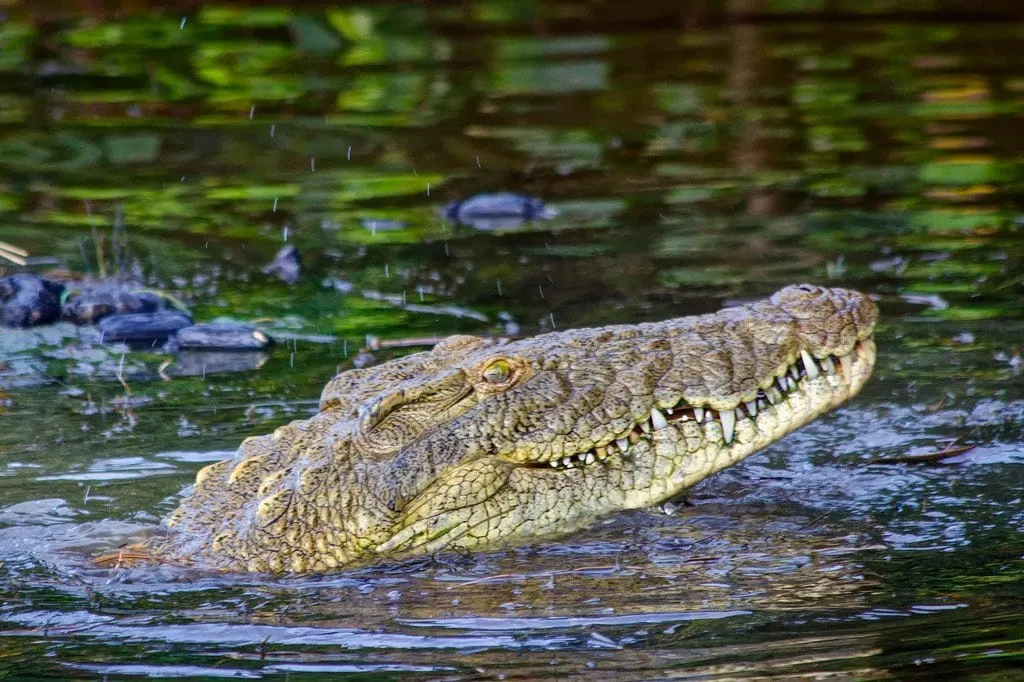
Nile Crocodile at iSimangaliso Wetlands
In Zulu, Isimangaliso means “miracle” – an apt name for the 3,000 square kilometers of wetland coastline and its dizzying biodiversity that’s now enjoying government protection as parkland. It’s a great place to see – and carefully keep your distance from – crocodile and hippo, alongside a wealth of more benign wildlife.
South African Townships
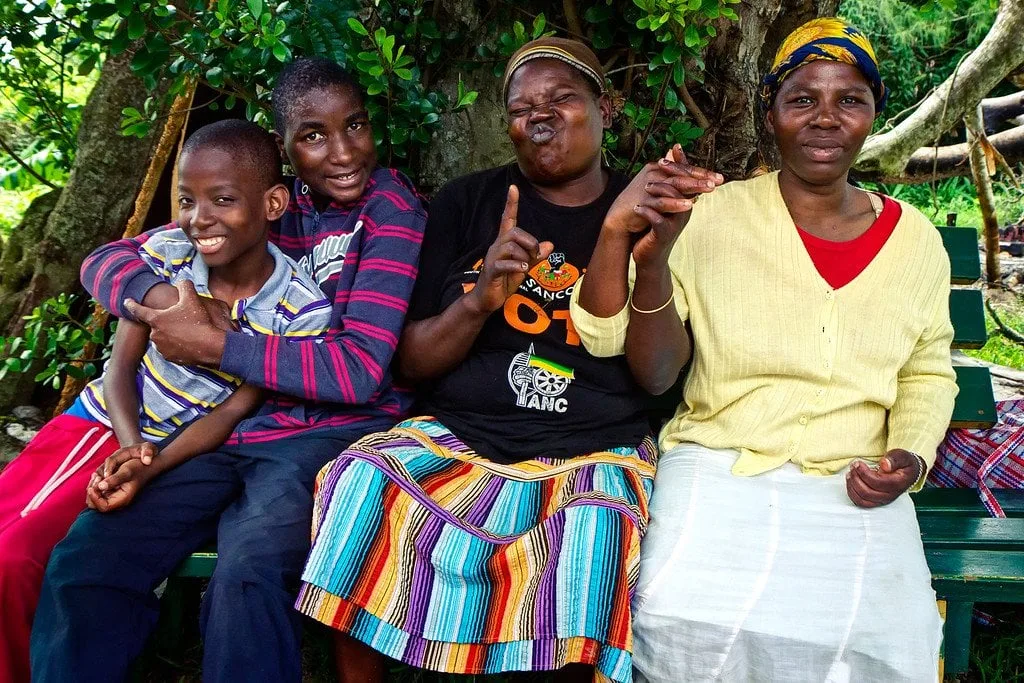
Family Living in Khula Township
Around half of South Africa’s urban population lives in townships – huge areas of primarily working-class housing, a mixture of post-apartheid government planning and informal, unplanned construction.
In the areas that are still underdeveloped, tourism is making a big positive impact – although be warned, the layout is sometimes a little chaotic (and lacking sign posts) so I’d advise you to take a guide who knows the place well.
Big Cats & Predators
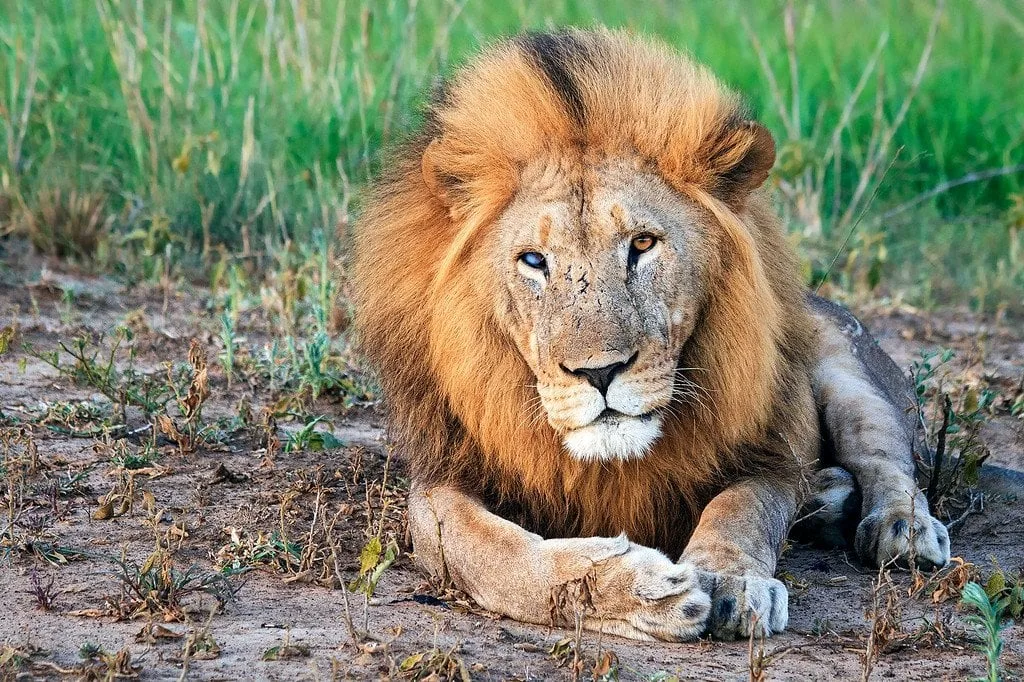
Large African Lion Missing an Eye
Nothing beats looking into the sleepy golden gaze of one of South Africa’s big cats and hoping that his last meal wasn’t all that long ago. In the big game reserves, you’ll be able to watch lions marking their territory, roaring to scare off intruders, and preying on other animals for food.
Contrary to popular assumption, it’s the females that do most of the hunting! If you’re lucky, or have a great guide, you’ll also spot leopards and cheetah – although the former are more reclusive, and the latter are so fast you might only see a blur!
[su_box title=”Travel Planning Resources for South Africa” style=”noise” box_color=”#333333″ title_color=”#FFFFFF” radius=”3″ class=”resource-box”]
Accommodation: Click Here For Deals in South Africa
Packing Guide
Check out my travel gear guide to help you start packing for your trip. Pick up a travel backpack, camera gear, and other useful travel accessories.
Book Your Flight
Book cheap flights on Skyscanner, my favorite airline search engine to find deals. Also read my tips for how I find the cheapest flights.
Rent A Car
Discover Cars is a great site for comparing car prices to find the best deal. They search both local & international rental companies.
Book Accommodation
Booking.com is my favorite hotel search engine. Or rent local apartments on Airbnb ($35 discount!). Read my post for tips on booking cheap hotels.
Protect Your Trip
Don’t forget travel insurance! I’m a big fan of World Nomads for short-term trips. Protect yourself from possible injury & theft abroad. Read more about why you should always carry travel insurance.
Recommended Guidebook: Lonely Planet South Africa
Suggested Reading: Diamonds, Gold, and War
[/su_box]
READ MORE SOUTH AFRICA TRAVEL TIPS
I hope you enjoyed my article about South Africa’s amazing Rainbow Nation! Here are a few more wanderlust-inducing articles that I recommend you read next:
Would you travel to South Africa for photography? Have any questions? Let me know in the comments below!
